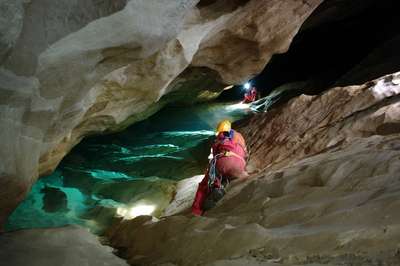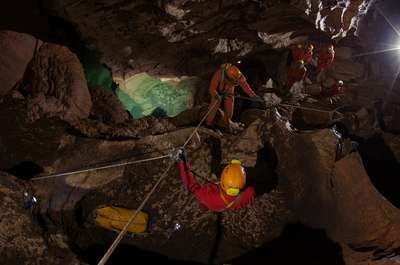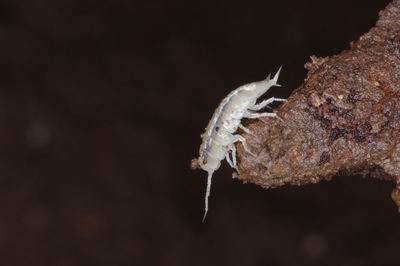Astronauts searching for life—underground

Astronauts dream of finding new life and for a select crew that dream might be within reach this week—albeit deep underground instead of in outer space.
An international crew of six astronauts will start training for a caving adventure designed to prepare them for spaceflight.
CAVES, an abbreviation of Cooperative Adventure for Valuing and Exercising human behaviour and performance Skills, prepares astronauts to work safely and effectively and solve problems as a multicultural team while exploring uncharted areas using space procedures.
The sunny island of Sardinia in Italy will welcome the astronauts from all the partners of the International Space Station. After a week spent learning the safety procedures and basics of exploring caves, the astronauts will venture underground on 7 September for six days.
Caves offer many similarities to space travel. Working in isolation from the outside world in confined spaces with minimal privacy as well as coping with technical challenges and limited supplies are conditions that astronauts have to live with in space—and underground.

The experience is designed to be as realistic as possible. A dedicated mission control will monitor the crew from a base station at the entrance of the cave. Briefings are held twice a day as they are on the International Space Station.
The crew is allowed only one shipment of supplies during their stay underground. They will have to choose the equipment carefully and give mission control at least 24 hours' notice to prepare the cargo.
Looking for life
The opportunity to conduct research will not be lost. Just as in space, the astronauts have a busy schedule performing scientific work as well as testing new equipment and procedures.

A large part of the Sardinian caves are unexplored or uncharted. The 'cavenauts' will have to navigate safely through passages while deciding which areas to explore. They will draw detailed maps of their progress to ensure they make it back to base camp and to help future cave explorers.
This year the astronauts will be searching for life-forms as well. "Nobody has systematically looked for life in these caves," says ESA astronaut trainer and CAVES course designer Loredana Bessone.
"Finding life big and small is always good, so I am very excited we will be looking for exotic bacteria and cave dwellers such as anthropods."
The astronauts will use the same safety protocols as used on spacewalks and they will also test a new communication system.
With support from their trainers, the astronauts will analyse their team-working skills and leadership qualities during the two-week course. A 'cavewalk'. Moving in a cave is similar to a spacewalk. It requires safety tethering, 3D orientation, with no-touch areas (speleothemes) and exclusion zones (dangerous paths). As in a spacewalk the view is stunning.
Provided by European Space Agency




















